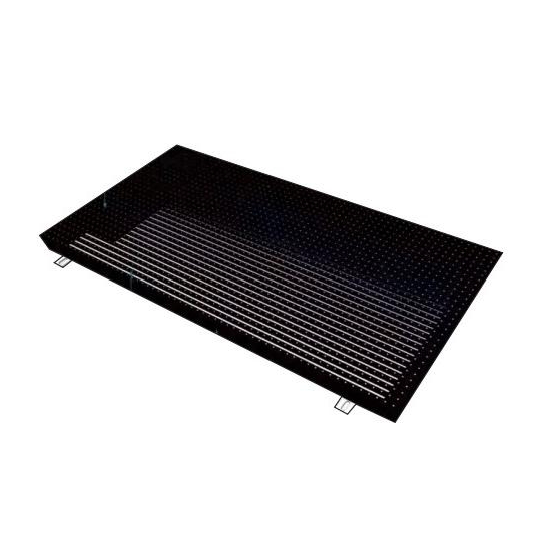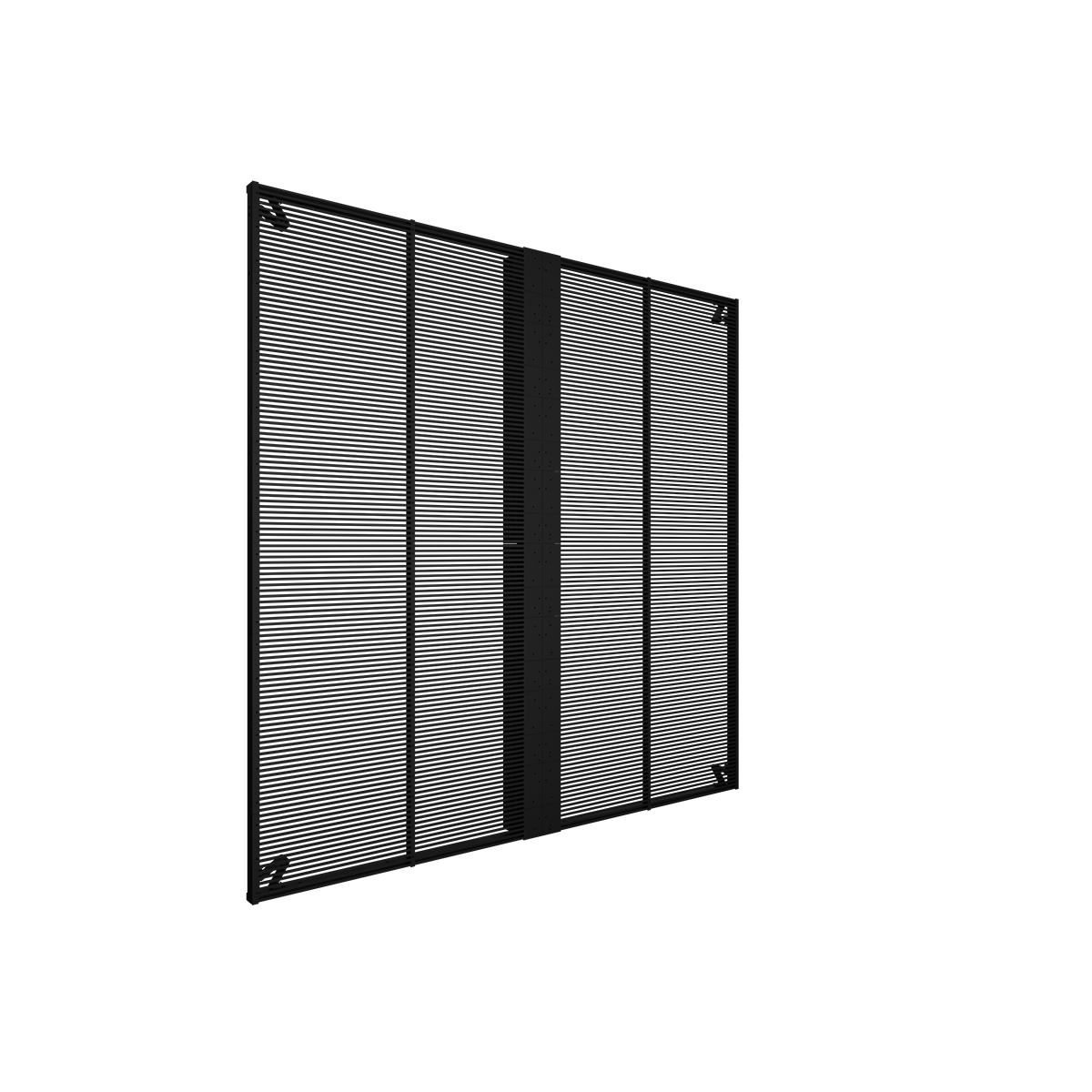In today's rapidly advancing technological landscape, selecting the right crystal film display supplier is paramount for businesses aiming to stay ahead of the competition. Whether you're in the consumer electronics sector, automotive industry, or any field that relies on high-quality display technology, partnering with a reliable supplier can make all the difference. This comprehensive guide will walk you through everything you need to know about choosing the perfect crystal film display supplier for your needs.
Understanding Crystal Film Displays
Crystal film displays represent a cutting-edge technology that combines flexibility, clarity, and energy efficiency. They are widely used in various applications, including smartphones, tablets, televisions, automotive dashboards, and more. Understanding the fundamentals of this technology is essential before delving into supplier selection.
What are Crystal Film Displays?
Crystal film displays utilize thin layers of liquid crystals sandwiched between transparent electrodes and polarizing filters. When an electric current is applied, the crystals align to allow light to pass through, creating images with exceptional clarity and brightness. The "film" aspect refers to the thinness and flexibility of the display, making it suitable for a wide range of innovative applications.
Advantages of Crystal Film Displays
- Flexibility: Their thin and bendable nature allows integration into curved and unconventional surfaces.
- High Resolution: They offer sharp and vibrant images, enhancing user experience.
- Energy Efficiency: Consuming less power compared to traditional displays, they contribute to longer battery life in portable devices.
- Durability: Resistant to impact and environmental factors, ensuring longevity.
Importance of Selecting the Right Supplier
Choosing the right crystal film display supplier is crucial for several reasons:
- Product Quality: A reputable supplier ensures high-quality displays that meet industry standards and enhance your products' performance.
- Cost Efficiency: Effective sourcing can significantly reduce production costs without compromising quality.
- Innovation Access: Leading suppliers often invest in R&D, providing access to the latest technological advancements.
- Reliability: Consistent supply and support are vital for maintaining production schedules and meeting market demands.
- Competitive Advantage: Superior display technology can set your products apart in a crowded marketplace.
Key Factors to Consider When Choosing a Supplier
When evaluating potential suppliers, consider the following critical factors to ensure you make the best decision for your business needs.
Quality and Certification
Quality should be the foremost consideration. Ensure that the supplier adheres to international quality standards and holds relevant certifications.
- ISO Certifications: Look for ISO 9001 for quality management and ISO 14001 for environmental management.
- Compliance Standards: Ensure compliance with industry-specific standards such as RoHS and REACH.
- Quality Control Processes: Inquire about their quality assurance protocols and testing procedures.
A supplier committed to quality will provide reliable and consistent products, reducing the risk of defects and recalls.
Customization Capabilities
Every business has unique requirements. Assess the supplier's ability to offer customized solutions tailored to your specific needs.
- Design Flexibility: Can they modify designs to fit your product specifications?
- Prototype Development: Do they offer rapid prototyping services for testing and validation?
- Adaptability: How quickly can they adapt to changing requirements or incorporate feedback?
Technology and Innovation
Staying ahead in technology is essential. Evaluate the supplier's commitment to innovation and technological advancement.
- R&D Investment: Does the supplier invest in research and development?
- Latest Technologies: Are they equipped with cutting-edge manufacturing processes and materials?
- Innovation Track Record: Have they introduced innovative products or solutions in the market?
Partnering with an innovative supplier ensures access to the latest technologies, keeping your products at the forefront of the industry.
Pricing and Cost-effectiveness
While quality is paramount, cost considerations cannot be overlooked. Assess the supplier's pricing structure and overall cost-effectiveness.
- Transparent Pricing: Are the costs clearly outlined without hidden charges?
- Volume Discounts: Do they offer competitive pricing for bulk orders?
- Value for Money: Does the quality and service justify the price?
Balancing cost and quality is key to maintaining profitability while delivering superior products.
Supply Chain Reliability
Reliable and timely delivery is crucial for uninterrupted production cycles. Examine the supplier's supply chain efficiency.
- Production Capacity: Can they meet your demand volumes consistently?
- Delivery Times: Are their delivery schedules reliable and punctual?
- Contingency Planning: Do they have plans in place to handle disruptions or emergencies?
Customer Support and Service
Exceptional customer service enhances collaboration and problem-solving. Evaluate the supplier's support mechanisms.
- Communication Channels: Are they responsive and accessible through various communication means?
- Technical Support: Do they provide ongoing technical assistance and troubleshooting?
- After-sales Service: How do they handle complaints, returns, and maintenance services?
Strong customer support fosters a productive and long-term partnership, facilitating mutual growth and success.
The Role of OEM Crystal Film Displays
Incorporating OEM crystal film displays into your products can offer significant advantages. Original Equipment Manufacturer (OEM) displays are designed and produced according to your specific requirements, ensuring seamless integration and optimal performance.
- Brand Consistency: OEM displays can be tailored to match your brand's aesthetics and functionality.
- Competitive Edge: Customized solutions can differentiate your products in the market.
- Cost Savings: OEM arrangements often lead to cost efficiencies through bulk production and streamlined processes.
Evaluating Potential Suppliers: A Step-by-Step Approach
To effectively assess and choose the right supplier, follow this structured approach:
Step 1: Define Your Requirements
- Product Specifications: Outline detailed specifications of the display technology you require.
- Volume and Frequency: Determine your order volumes and frequency to assess capacity needs.
- Budget Constraints: Establish a clear budget framework for sourcing.
Step 2: Conduct Market Research
- Identify Potential Suppliers: Compile a list of suppliers specializing in crystal film displays.
- Review Portfolios: Examine their product portfolios and past projects.
- Seek Recommendations: Consult industry peers and forums for supplier recommendations.
Step 3: Request for Proposals (RFP)
- Detailed RFP: Send out comprehensive RFPs outlining your requirements and expectations.
- Evaluate Responses: Assess proposals based on quality, pricing, capabilities, and compliance.
Step 4: Assess Quality and Compliance
- Sample Testing: Request product samples and conduct thorough testing.
- Audit Certifications: Verify all quality and compliance certifications.
- Factory Audits: If possible, conduct on-site audits to inspect facilities and processes.
Step 5: Analyze Financial Stability
- Financial Health: Review the supplier's financial statements to ensure stability.
- Investment in Technology: Assess their investment in technology and infrastructure.
Step 6: Evaluate Customer Service
- Communication Efficiency: Test their responsiveness and communication clarity.
- Support Services: Inquire about technical support and after-sales services.
Step 7: Negotiate Terms and Agreements
- Contractual Terms: Negotiate favorable terms covering pricing, delivery schedules, and quality assurances.
- Service Level Agreements (SLAs): Establish clear SLAs to define expectations and responsibilities.
- Confidentiality and IP Protection: Ensure agreements protect your intellectual property and sensitive information.
Step 8: Make the Decision
- Weighted Scoring: Use a weighted scoring system to objectively compare and select the best supplier.
- Pilot Orders: Consider placing a pilot order to validate performance before full-scale engagement.
- Establish Partnership: Formalize the partnership and commence collaboration.
Following this methodical approach will help you select a crystal film display supplier that aligns perfectly with your business objectives and operational needs.
Future Trends in Crystal Film Display Technology
Staying informed about emerging trends ensures that your partnership with a crystal film display supplier remains future-proof and adaptable.
Advancements in Flexibility and Durability
- Foldable Displays: Innovations are leading to more robust foldable and rollable displays, expanding application possibilities.
- Enhanced Materials: Development of new materials promises increased durability and performance under extreme conditions.
Improved Energy Efficiency
- Low-Power Technologies: Ongoing research aims to reduce power consumption further, critical for portable and wearable devices.
- Integration with Renewable Energy: Potential integration with energy-harvesting technologies for self-sustaining displays.
Higher Resolution and Clarity
- Ultra-High Definition (UHD): Advancements towards achieving even higher resolutions for immersive visual experiences.
- Better Color Accuracy: Enhanced color reproduction technologies for more vivid and true-to-life displays.
Smart and Interactive Features
- Touch Sensitivity: Improved touch and gesture recognition capabilities.
- Integration with AI: Displays that can adapt and respond intelligently to user behavior and environmental conditions.
Sustainability and Eco-Friendliness
- Recyclable Materials: Emphasis on using recyclable and biodegradable materials in display manufacturing.
- Eco-friendly Production Processes: Adoption of greener manufacturing processes to reduce environmental impact.
Partnering with a forward-thinking crystal film display supplier ensures access to these emerging technologies, keeping your products innovative and relevant.
Conclusion
Selecting the right crystal film display supplier is a strategic decision that can significantly influence your product quality, market competitiveness, and overall business success. By thoroughly understanding your needs, meticulously evaluating potential suppliers based on critical factors such as quality, customization capabilities, innovation, and reliability, and staying abreast of future trends, you can forge a partnership that drives growth and innovation.
Remember, the ideal supplier is not just a vendor but a collaborative partner committed to your success, offering solutions that meet and exceed your expectations. Take the time to conduct diligent research and assessments, and you'll be well on your way to enhancing your products and delighting your customers with exceptional display technology.
















